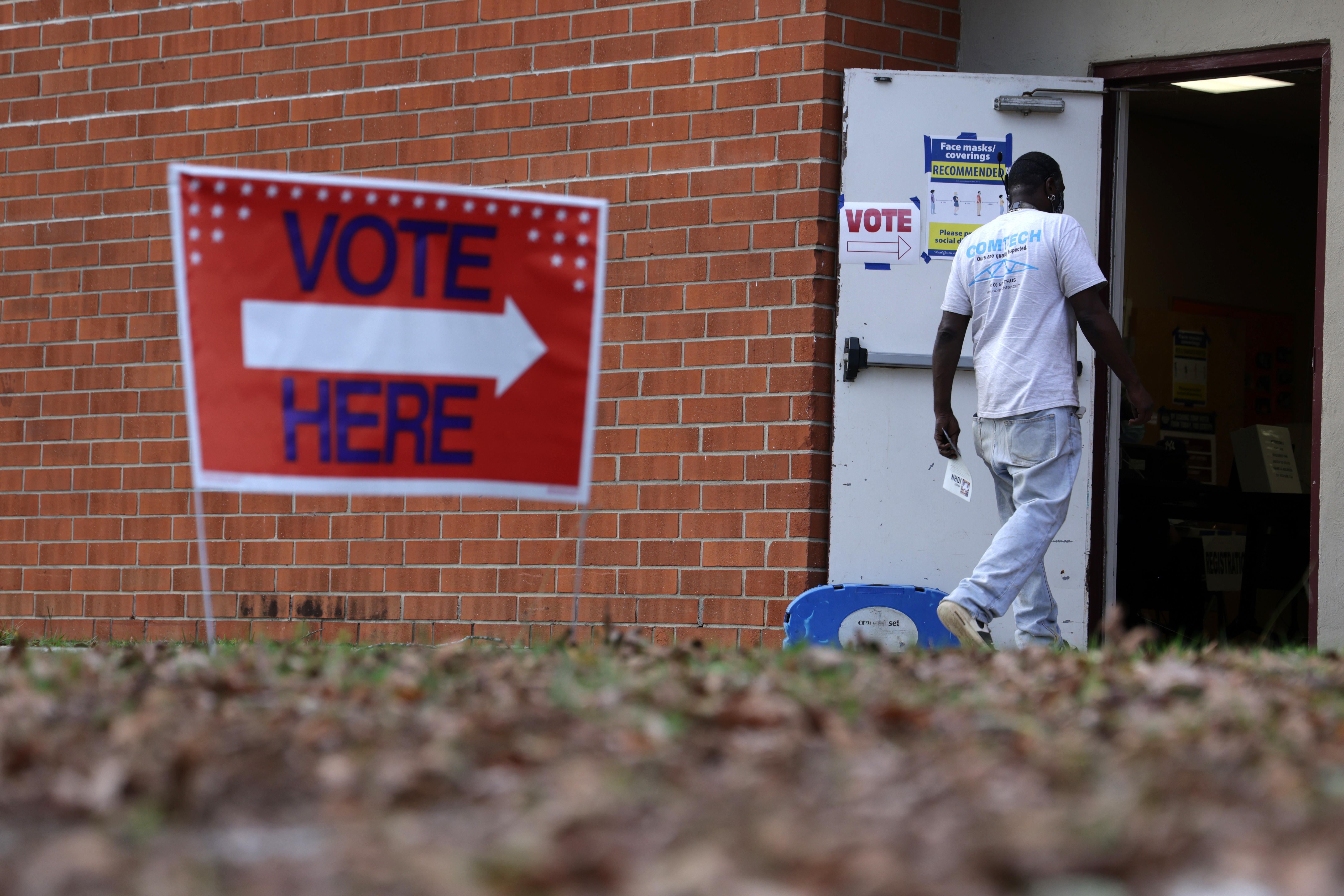On Saturday, Alamance County sheriff’s deputies and city police pepper-sprayed a crowd of about 200 people who were peacefully marching to the polls in Graham, North Carolina, without warning and on slim reasoning. Graham police claimed that protesters didn’t have the adequate permits to close off the road, while the Alamance County Sheriff’s Office said that the march was shut down out of “concerns for the safety of all.”
If it is at all difficult to understand how a police department could act so heinously—particularly when children and elderly community members are present within the crowd—then it’s important for one to grasp the context that the law enforcement operates within.
This is the second time since 2016 that Alamance County has made national news for its treatment of voters. In 2017, 12 residents, most of whom were Black and on parole or probation for felony charges, were charged for illegally voting in the 2016 election. If someone is convicted of a felony in North Carolina, they lose their right to vote for the entirety of their incarceration and until any parole or probation has concluded—another key method of voter suppression in the state.
“There is no doubt that in North Carolina’s history, felony disenfranchisement legislation was enacted by legislators as a way to keep African Americans from voting and participating in democracy,” Orville Vernon Burton, the Judge Matthew J. Perry distinguished professor of history at Clemson University, told WRAL in July.
While it’s up to the local district attorney to bring charges in these cases, police—particularly sheriffs, who wield an astounding amount of power within their jurisdictions—have a critical role in setting the tone for the prosecutions.
Voter intimidation is an omnipresent concern in North Carolina, a state that has tried to prevent Black and brown voters from casting ballots with “surgical precision” since Reconstruction. During the late 1800s, a high-level white supremacist campaign in North Carolina went to extreme acts of violence—including massacring Black residents in Wilmington—in order to regain political power within the state. Less outwardly violent voter suppression tactics have cropped up in the state following the Supreme Court’s weakening of the Voting Rights Act in Shelby v. Holder, such as North Carolina’s infamous voter ID law and gerrymandering so precise that every district in the state had to be redrawn.
Prior to the 1965 Voting Rights Act, Black people across the South were at risk of being arrested by police on Election Day for minor crimes by officers hoping to deter voters from casting ballots. In recent years, there have been complaints about suspiciously timed arrests and traffic stops involving Black residents on Election Day.
In North Carolina, “the sheriff’s office is a creation of the state constitution. The sheriff’s office is on the same hierarchical tier as the governor’s office,” explained Dawn Blagrove, executive director of the Carolina Justice Policy Center, to WUNC in May. “So you need to know what they think, where they stand policy-wise, and what type of culture they’re going to create in your county.”
Alamance County Sheriff Terry Johnson, who has held the position for almost 18 years, has a record defined by racism and intimidation. As the 2004 general election approached, Johnson announced that he would send deputies to the homes of all new registrants with a Hispanic-sounding name to investigate whether they were citizens. He claimed that undocumented people were registering to vote at local Division of Motor Vehicles offices with falsified documents. (The Justice Department sent election monitors to Alamance in 2004, 2008, and 2012.)
Johnson has a history of making incredibly racist statements about immigrants—including egregious, nonsensical claims that it’s socially acceptable to sexually assault underage girls in Mexico. The sheriff has been vehement about incarcerating “criminal immigrants,” or “taco eaters,” who are coming into the country to “victimize our children, our citizens, with drugs, murders, rapes, robberies, you name it.” In early 2019, he told the Alamance County Board of Commissioners that undocumented “criminals” were “raping our citizens in many, many ways.”
Beyond his rhetoric, Johnson has used his office to wreak havoc on immigrant communities in Alamance. The sheriff’s office was sued by the Justice Department for an alleged pattern of abusive enforcement against Latinos, including charging Latino drivers with traffic violations at least six times as often as non-Latino drivers. (A district court dismissed the suit, and it was then settled in lieu of an appeal, with the sheriff’s office agreeing to implement a “bias-free policing plan” and other reforms.) Johnson has also advocated for higher policing budgets in order to crack down on immigration, and used money from the $3.6 million the county received from housing Immigration and Customs Enforcement detainees in 2019 to give out bonuses to his staff.
This summer, as citizens were demanding the removal of a Confederate statue in Graham, the sheriff’s office announced that the city’s police department would not be granting permits to protesters. When an activist asked Johnson why he and his deputies were “breaking the law” by forgoing North Carolina’s mask mandate, he replied: “Ma’am, you’re breaking the law. We know you’re a member of antifa.”

